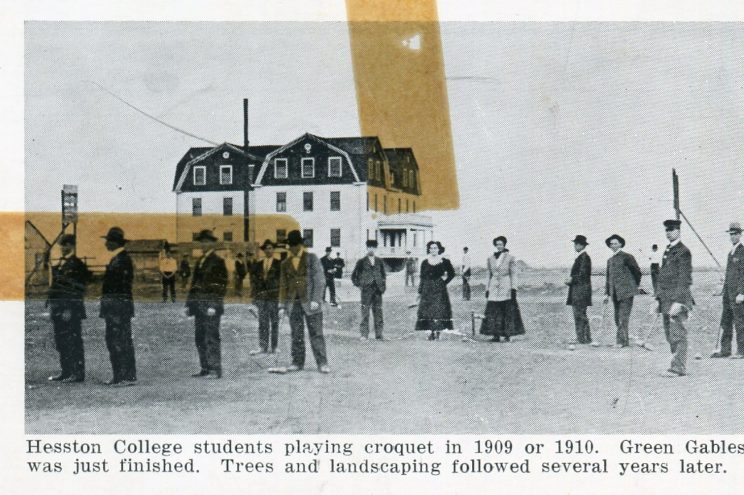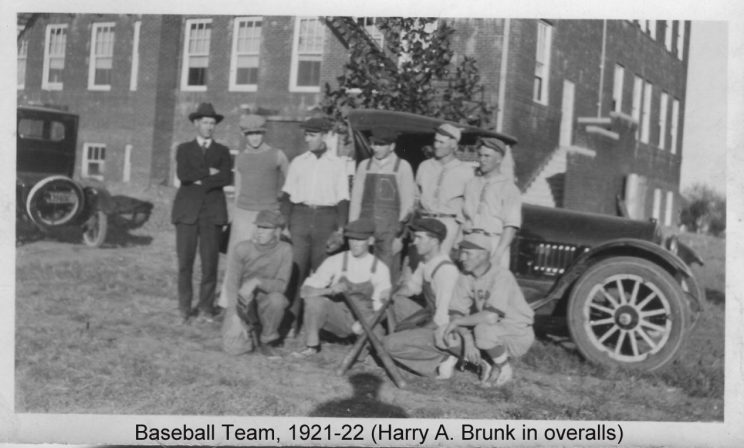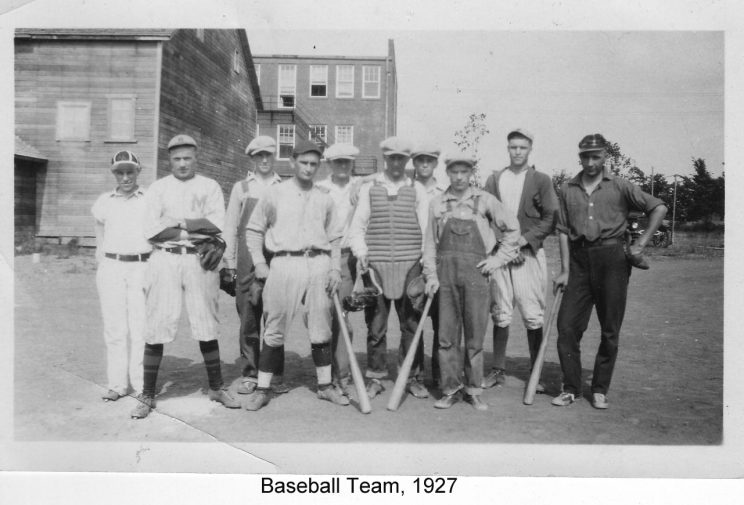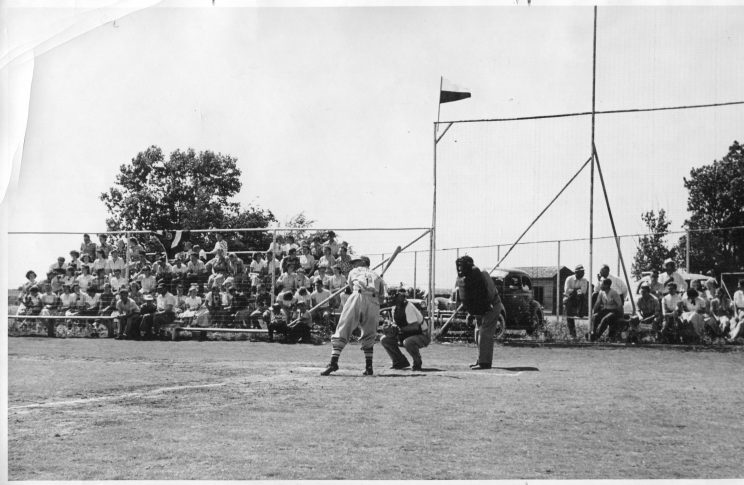Hesston College sports history: From sinful to acceptable
By Jasmine Pankratz – Horizon sports editor
When Hesston College began in 1909, sports weren’t even imagined as one day being a part of the “Hesston College experience.” In fact, the Mennonite Board of Education wrote a letter to Hesston saying sports “encourage a mania . . . which surely saps the spirituality of the players.” Sponsors threatened to take away prayers and support if sports were played because they were thought to be evil and indecent.
Now, fast-forward 109 years and we’re investing $3 million in a renovation towards athletics. 40 percent of our student body is made up of student athletes. We recently joined the Jayhawk conference as an official member, making Hesston part of one the most prestigious junior college conferences: A pivotal change in attitude towards sports at HC.
Hesston’s trek to accepting athletics is a long story with many contributors to the Hesston College we know today.

IN THE BEGINNING…THE EVIL OF SPORTS
When the college first opened, sponsoring Mennonite conferences threatened to withdraw their “prayers and support if popular games” became part of the school. Instead, students were encouraged to get physical exercise by doing janitor work and farm chores; using cooperation, not competition. Working out was considered foolish, and students coped by playing informal games of football, baseball, and basketball in the mud with overalls as uniforms.

THE 1920s – NO ORGANIZED YELLING
Three years after the college opened, sports became a problem. Because of students playing games during the school day, the faculty made rules that limited them to playing only in the mornings before 8 a.m., noon, and after 3:45 p.m. Later in November, students signed and presented a petition to the faculty requesting a place to exercise in poor weather. The faculty consented and cancelled classes for a day so that boys could build a gym.
The ministers of the Missouri-Iowa Conference sent a letter expressing concern about athletics. Faculty met with officers of the athletic association to discuss the matter. They agreed that five basketball games would be allowed as public sporting events and players had to be approved to play. They agreed on a set of rules including “special talks” being given to men and women in separate meetings regarding the “spiritual and moral ideals of conduct” and that “there shall be no organized yelling” during games.
Still, school policy confined athletics to intramural games in basketball, baseball and tennis. In 1923, a special faculty meeting was called to discipline seven basketball players who violated athletic policy by playing organized games in Newton during Christmas break. The students admitted to breaking an athletic rule and violating the spirit of the school and were forgiven. But it was made clear that a second violation would lead to expulsion.

THE 1940s – INTRAMURALS BEGIN
During those 20 years, students continued to advocate for intramural sports and their wishes were granted as HC began developing a reputation for a strong intramural sports program. While a new gym was being built for intramurals, students went to Moundridge High School to play intramural basketball. A gym, Hess Hall, was built in 1948.
That same year the president of MBE wrote to Hesston’s president, Milo Kauffman, voicing his concerns that Hesston was planning to offer a coaching course. Kauffman replied, explaining a few students were considering training to be athletic directors. One of those was Evan Oswald. Kauffman, a secret sports fanatic, would sneak away to baseball games in Kansas City without anyone knowing. He persuaded Oswald to begin the fight for intercollegiate sports at Hesston College.

THE 1950s – INTERCOLLEGIATE SPORTS BEGIN
Hesston played its first college varsity basketball game on January 20, 1956 vs. Tabor College B squad, losing 61-52. Basketball became the first varsity sport in 1957, followed by baseball in 1958, coached by Oswald.
THE 1960s – MORE SPORTS ADDED, A CONFERENCE BEGAN
Soccer joined in 1963 as one of the five college programs in Kansas. Oswald and colleagues including Gerry Sieber, later launched programs in cross country, golf, tennis and track.
In 1964, the Prairie Christian College Athletic Conference was formed among St. John’s, Mcpherson Central, York (NEB.) and Friends Bible College, along with Hesston.
In 1967, women began to compete actively in intercollegiate sports. This was limited due to Hesston being one of few schools with women’s sports. Not yet labeled intercollegiate, these “extramural” sports included: tennis, softball, basketball, bowling, volleyball, badminton, softball, archery and track and field.
In 1968, the conference name was changed to, “Prairie Junior College Conference,” and they added Cloud County Community College.

OSWALD’S LEGACY
A significant part of the Hesston experience for many students was, and still remains, the athletic program, ushered in by Oswald. He was the first basketball coach, tennis coach, golf coach, baseball coach, and 20-year long first athletic director. The baseball field was built May 17, 1996 and then named for “the founding father of athletics” in 2001. For more information regarding Oswald’s legacy, CLICK HERE.
Historical quotations compiled from John Sharp’s “A School on the Prairie,”


